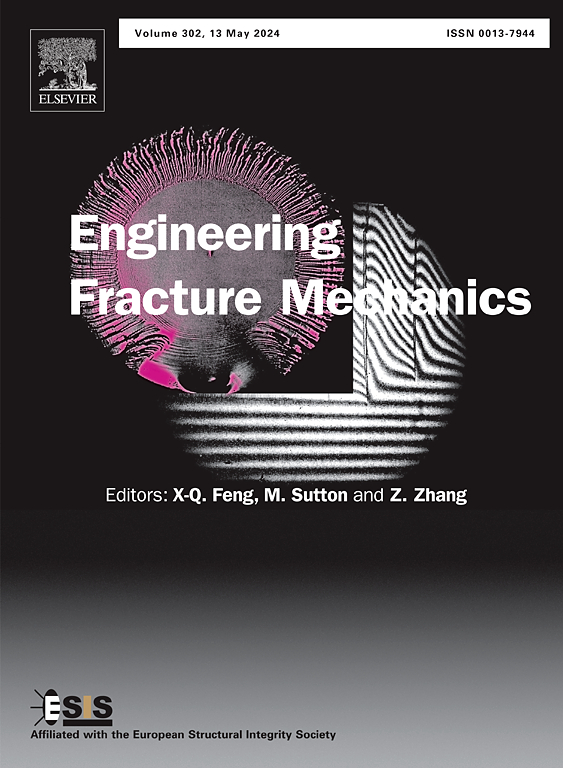A fracture mechanics model for predicting tensile strength and fracture toughness of 3D printed engineered cementitious composites (3DP-ECC)
IF 4.7
2区 工程技术
Q1 MECHANICS
引用次数: 0
Abstract
Engineered cementitious composites (ECC) has emerged as a promising self-reinforced material for 3D printed concrete structures, which could potentially remove the dependence on steel reinforcement. The interfacial crack resistance of 3D printed ECC (3DP-ECC) should be emphasized due to the inherent layered stacking process. Tensile strength and fracture toughness are two critical fracture parameters in describing the crack resistance. Determining realistic fracture parameters is crucial for guiding structural safety design. This study aims to develop a fracture mechanics model for determining the size-independent interfacial tensile strength and fracture toughness of 3DP-ECC based on boundary effect model (BEM). Firstly, the interfacial fracture behavior of 3DP-ECC was experimentally investigated by three-point bending tests. A fracture mechanics model was subsequently proposed to predict the size-independent tensile strength and fracture toughness by incorporating the material heterogeneity and discontinuity. The results show that the interfacial tensile strength and fracture toughness of 3DP-ECC could be extrapolated analytically once the peak load was obtained by the three-point bending fracture test, and the predicted values of tensile strength and fracture toughness were proved to follow normal distribution. Additionally, the peak load prediction lines and fracture failure curves with 95 % confidence interval for 3DP-ECC were further constructed using the determined fracture parameters, demonstrating good accuracy and reliability. This work offers a theoretical basis for the safe and reasonable design of 3DP-ECC structural members.
求助全文
约1分钟内获得全文
求助全文
来源期刊
CiteScore
8.70
自引率
13.00%
发文量
606
审稿时长
74 days
期刊介绍:
EFM covers a broad range of topics in fracture mechanics to be of interest and use to both researchers and practitioners. Contributions are welcome which address the fracture behavior of conventional engineering material systems as well as newly emerging material systems. Contributions on developments in the areas of mechanics and materials science strongly related to fracture mechanics are also welcome. Papers on fatigue are welcome if they treat the fatigue process using the methods of fracture mechanics.

 求助内容:
求助内容: 应助结果提醒方式:
应助结果提醒方式:


